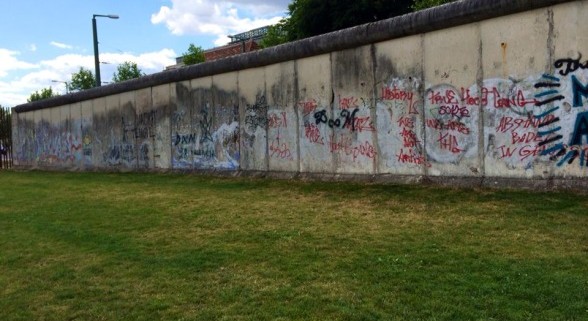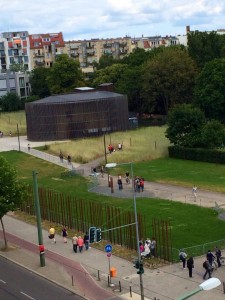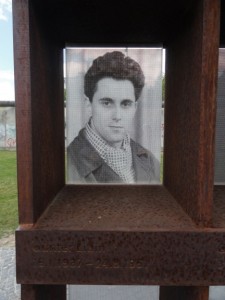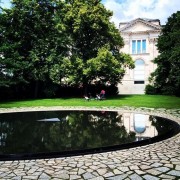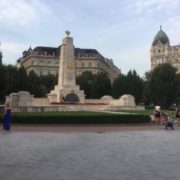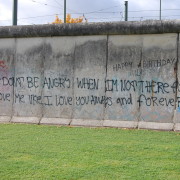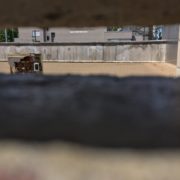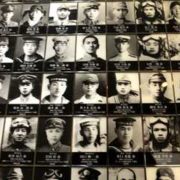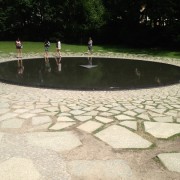The Berlin Wall
On our excursion to Berlin, Germany, the Berlin Wall memorial was the first place we visited. We pulled up to a grassy park where people were walking with their families, their pets, and enjoying the sunshine. As we entered the park, our tour guide pointed to a concrete wall with scribbles of graffiti all over it. Before 1989, the area around the Wall was known as the death strip because if you were caught there you were to be shot on site. We were underwhelmed by the “Wall” that separated a country for nearly thirty years. We found it hard to imagine this beautiful grassy park was once an area of separation, tension, and death. This memorial was not intended to reconstruct or restore the wall, but to stand as a reminder of what once separated a great city.
On the morning of 13 August 1961, without any warning, the citizens of Berlin awoke to a wall separating the Eastern and Western sections of the city. Over the twenty-eight years that the wall stood, one hundred and thirty-eight people died. This number does not include the guards that were also killed attempting to escape. Of these one hundred and thirty-eight people, one hundred and twenty-two were male and eight female. This number also includes children. On one part of the memorial, victims were listed in chronological order, starting with Ida Siekmann. She was the first woman to die on 22 August 1961 when she jumped from her apartment window to cross the wall and landed too hard. The knowledge of Ida’s death came as a surprise, and hit us pretty hard, to find out that many people did not die at the hands of the Party, but while trying to escape from the Communist regime.
The second victim memorialized here was Gunter Litfin, who was the first to be shot. A particularly disturbing story was that of Cetin Mert, who had fallen victim to the Wall on his fifth birthday in 1975. He had received a beach ball, which he took down to play with at a park alongside the water. The ball fell into the water, and Cetin fell in trying to retrieve it. Because of the fear onlookers had of being shot by entering the water (which was the border between East and West Berlin) no one helped Cetin, and he drowned. What really struck our group was the innocence in this tragedy and that no one was willing to save a small child in fear for their own lives.
By Taryn Mogavero, Madison Ball, Allison Kisielis, Samantha Krezmien

